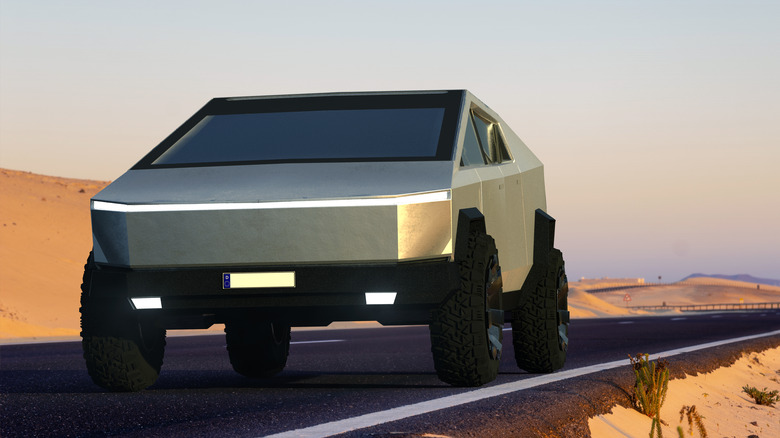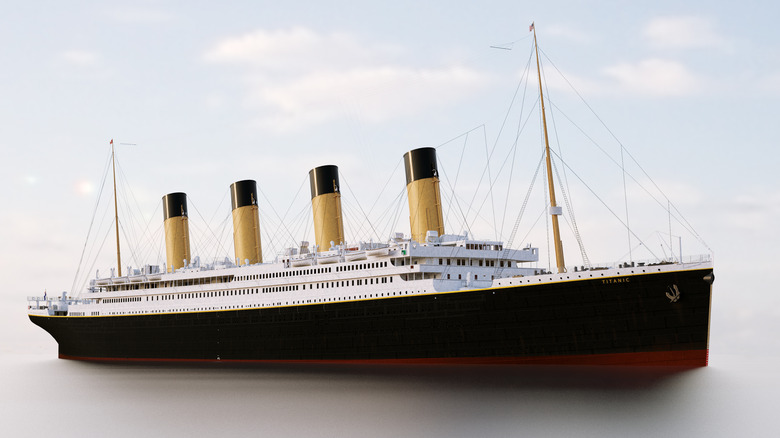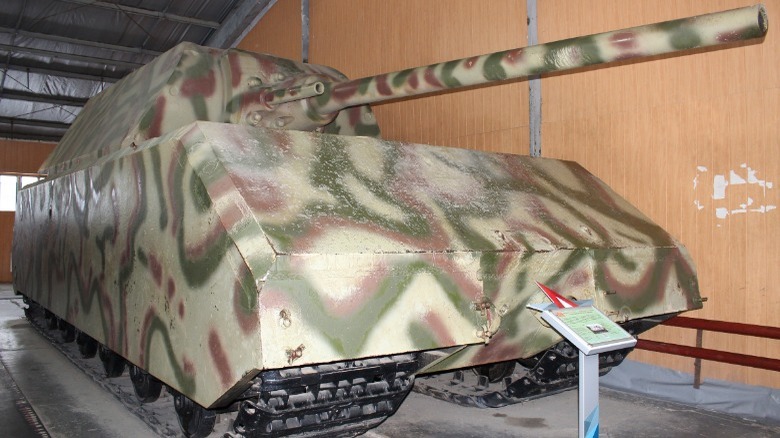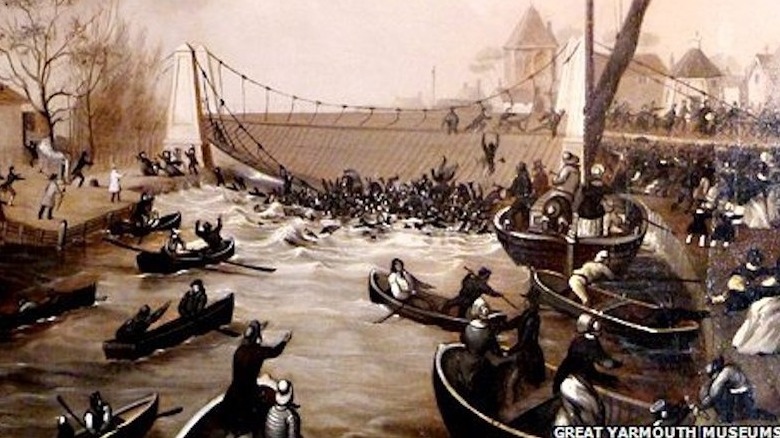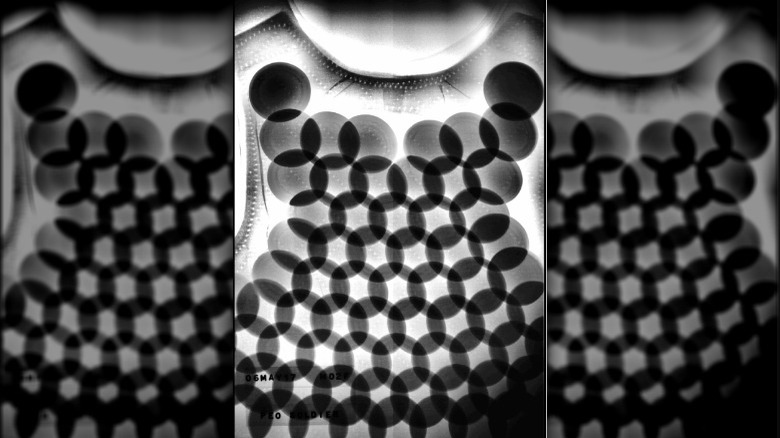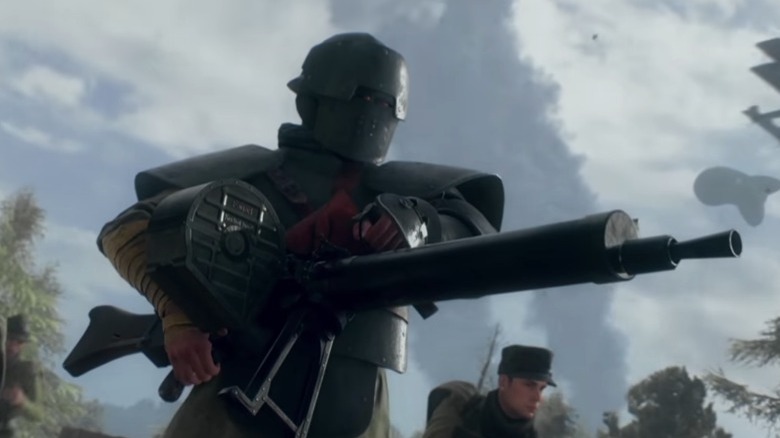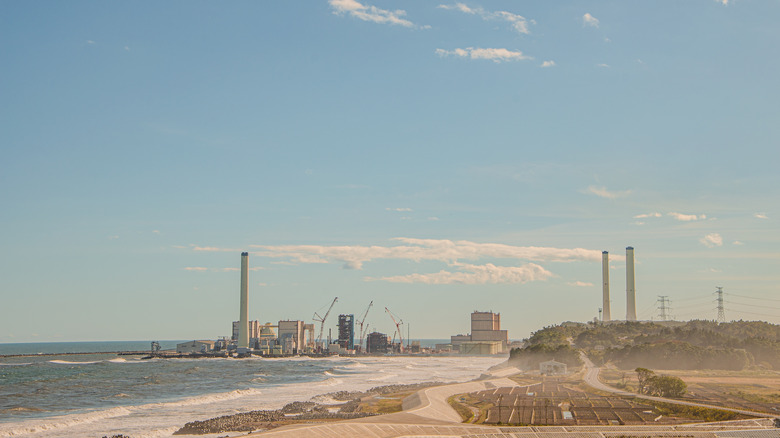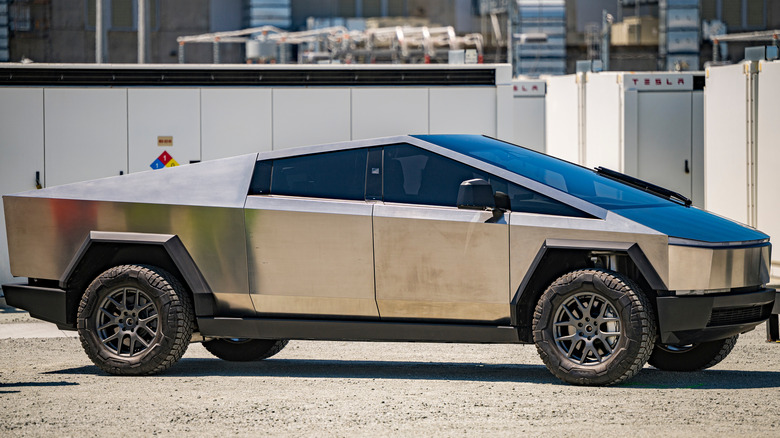Eight Inventions That Were Supposed To Be Indestructible (But Weren't)
Few forces in this world can match human ingenuity, with the possible exception of hubris. Technology is advancing at an exponential rate, and every new invention is potentially more powerful than previous creations. Modern cars usually get more miles to the gallon than older models, and newer game consoles sport more powerful graphics cards and larger storage systems than prior platforms. These improvements usually steal the limelight in marketing, pitches, and general discussions, but sometimes the people behind these inventions get a little ahead of themselves.
Now and then, a product is touted as the pinnacle of technology and unbeatable by rivals or even nature itself. However, these boasts rarely reflect reality. Due to a fluke, poor craftsmanship, or just karma, most if not all inventions that are supposed to be "indestructible" end up being significantly less so. And these faults are often demonstrated in a destructively catastrophic fashion. Here are eight inventions that were supposed to be invincible but were proven otherwise.
Titanic and Britannic
Whenever someone talks about a vehicle that was significantly less invincible than advertised, the Titanic is often the first analogy made. But while the Titanic was the first supposedly unsinkable ship that proved quite sinkable, it wasn't the last. The Titanic was the second in the Harold & Wolf shipyard's White Star Line fleet of Olympic-class liners. While the first, the Olympic, served a respectable 24-year tour of duty, its younger sisters were significantly less lucky. The third Olympic-class liner, the Britannic, launched in February of 1914, just a few months before World War 1, and started life as a passenger ship before it was used as a hospital vessel. The Britannic's creators learned from the Titanic's mistakes and designed the Britannic to be the safest Olympic-class liner out there. Unfortunately, those intentions didn't help much.
On November 21, 1916, the Britannic ran into German mines and sank. The explosions ripped through the ship's watertight compartments, which could have saved the Britannic had it hit something like an iceberg. But as Dr. Robert Ballard pointed out, "You can have all the safety in the world and it's not going to help you if you hit a bomb." Then again, the Britannic's steel hull was allegedly of poor quality, which made the ship more brittle than intended. And even if the hulls had been made of high-quality metals, according to Dr. Ballard's findings, some "idiot" left many watertight compartments and portholes ajar, thus letting water flow unimpeded.
Panzer VIII Maus
In the media, tanks are often portrayed as unstoppable engines of destruction. That depiction is often far from the truth, though some tanks are actually quite beefy. How do you power such an overwhelming amount of armor? Thankfully the Nazis never figured that out. The Panzer VIII Maus was supposed to be Hitler's ace in the hole. Designed by Ferdinand Porsche (the founder of Porsche AG), this behemoth was built with 250mm hardened steel plates, a 128mm cannon, a 75mm tank gun, and a 7.92mm machine gun. This design would have rendered the Maus invulnerable to most if not all enemy armaments and capable of demolishing everything the Allies threw at it. However, when fully loaded, the Maus would have tipped the scales at 188 tons and required quite the engine to power its treads.
While Porsche successfully designed a truly indestructible tank, he never got to see it on the battlefield. Each prototype was far too heavy. The tank's engine struggled with the Maus' overwhelming armor, and that was when it didn't give out entirely. To make matters worse (or in our case, better), during development, the Allies were really hammering Nazi Germany's factories, slowing down production. Nazi Germany was also experiencing an oil drought at the time. Even if Porsche had worked out the Panzer VIII Maus' kinks, there probably wouldn't have been enough fuel to go around.
Yarmouth Suspension Bridge
Every bridge has a weight limit, and some bridge types can handle more weight than others. Suspension bridges are up there when it comes to max capacity, but that only applies to bridges with properly welded parts. The Yarmouth Suspension Bridge stretched across the River Bure in Great Yarmouth, located in Norfolk, England. The bridge opened in 1829 and originally spanned 63 feet (the span is the distance between support structures), but this distance was later increased to 86 feet. On May 2, 1845, hundreds of people gathered on the bridge to watch Nelson the Clown travel up the river in a tub pulled by four geese. Once he came into view, everyone on the bridge moved to one side to get a better look, which is when disaster struck. The Yarmouth Suspension Bridge failed, and 400 onlookers tumbled into the river. According to records, 79 people died during the incident, 59 of whom were children.
According to investigations, the Yarmouth Suspension Bridge should have been able to support all these people, even when taking into account the bridge's extension. But, a scarf joint wasn't welded correctly. Had the joint been welded to code, the bridge probably wouldn't have failed. The investigation also discovered that the suspension bridge's iron links might not have been tested properly. Furthermore, the bridge might not have collapsed had it remained at its original span.
[Featured image by CJW Winter via Wikimedia Commons | Cropped and scaled | CC BY-SA 2.0]
Dragon Skin Body Armor
Scientific investigation is based on repetition. To determine the capabilities of an invention, numerous unrelated parties must test it. If any disagree on a device's effectiveness, nothing can save its reputation, especially if one party is a branch of the U.S. government. In the early 2000s, Pinnacle Armor Inc. developed what it claimed was superior to military-grade body armor: Dragon Skin. Dragon Skin was constructed out of overlapping high tensile strength ceramic discs, each encased in fiberglass textile. These were supposed to improve wearer protection without impeding movement, and to the general public, they worked. Multiple shows on the History Channel and Discovery Channel demonstrated the Dragon Skin's resilience live on air. Everything bounced off the armor, from AK-47 rounds to grenade shrapnel. Dragon Skin seemed to live up to the hype, but then the U.S. military gave it a shot.
In 2006, the U.S. Army purchased 30 sets of Dragon Skin and submitted them to a battery of tests. According to a report, the armor failed virtually every test the Army threw at it. The Air Force also tested Dragon Skin armor and reached similar conclusions. While the National Institute of Justice (NIJ), part of the Department of Justice (DOJ), had initially certified the Dragon Skin Armor, the agency overturned its decision and decertified Dragon Skin Armor after these catastrophic test results. Pinnacle Armor attempted to fight this decision and even tried to sue the NIJ, but Dragon Skin Armor was already dead.
CDs
Forget the console wars; ever heard of the format wars? Betamax lost a long time ago; cassettes are barely hanging on, and vinyls are somehow making a comeback. However, CDs are the clear winner because of their small size and crisp sound, but only if you keep them in pristine condition. Easier said than done.
CDs might not be cutting-edge technology anymore, but they set the world on fire when they were introduced. Almost everyone was impressed by the CD's compact size and, more importantly, their seeming resistance to dust and fingerprints. Like long-play records, CD data is stored in bumps and grooves, but unlike its vinyl rival, CDs are read by lasers and "protected" by a thin layer of plastic. While CDs are a bit more dust-resistant than vinyl, they aren't the invincible data storage discs we thought they were.
Human error has reliably demonstrated that CDs are just as breakable as every other format out there. In fact, CDs might be worse than cassettes and vinyl since while those formats just skip when they are scuffed up, CDs stop working entirely. Plus, because of their exposed readable surfaces, CDs are scratch and fingerprint magnets. Despite what an early commercial stated, CDs won't work just fine if you pour honey or coffee over them.
Brewster Body Shield/Arditi Armor
World War 1 was defined by the use of trench warfare. Armies would dig trenches into opposite sides of a battlefield, separated by giant swaths of blasted ground populated by barbed wire and corpses. Stepping into this "no man's land" was practically a death sentence, but it was the only way to gain any ground. Some people tried pioneering armor to protect soldiers who braved the battlefield.
One of the most bizarre armors in this or any war was the Brewster Body Shield. Designed by Dr. Guy Brewster, this suit encased wearers' heads and torsos in a metal, bullet-shaped shield. To Dr. Brewster's credit, he put his money where his mouth was and demonstrated his armor's capabilities. The U.S. Army showered him with bullets, and he survived unscathed. However, this defense came at a cost. Brewster Body Shields were bulky and heavy, and soldiers couldn't turn their heads. Plus, the Brewster Body Shield didn't cover arms and legs.
Meanwhile, many Italian battalions relied on an elite band known as the Arditi. These shock troops charged enemy positions while allies provided cover fire. The Arditi generally wielded little more than a dagger and some concussive grenades, and they also bore Farina armor, which consisted of a metal helmet, cuirass, and shoulder pads. Despite the Farina armor's invincible depiction in the "Battlefield 1" mission Avanti Savoia, real Farina armor only protected wearers when shot at from over 125 meters.
Fukushima Reactor
The Earth's surface is constructed out of tectonic plates that shift, and earthquakes result when they bump into or grind on top of one another. Countries close to or on top of a plate's edge are subject to frequent and powerful earthquakes, and buildings in these nations have to be constructed with this in mind. All is well and good until you start erecting nuclear power plants.
The Fukushima Daiichi Nuclear Power Plant was one of Japan's first nuclear reactors and came online in 1971. The Fukushima plant was built to withstand significantly powerful earthquakes and was put to the test during the 1978 Miyagi earthquake, which had a magnitude of 7.7. The power plant and its reactors were undamaged, but after several decades of use, the plant became horribly outdated and was at risk of "a serious problem" during large earthquakes. Then a large earthquake hit.
On March 11, 2011, the Tohoku earthquake hit Japan. The earthquake shook up records and regions alike with its 9.0 magnitude. The Fukushima Daiichi reactor shut down as intended when it detected the earthquake, but it still had to circulate coolant through the cores. The power plant's diesel generators were supposed to do that, but they were flooded by the subsequent 14-meter tsunami waves — the Fukushima Daiichi plant was only built to withstand 5.7-meter waves. Without the generators, Fukushima Daiichi went into meltdown, resulting in numerous explosions and radioactive material spilling out into the nearby land, which mutated local wildlife.
Tesla Cybertruck
The Tesla Cybertruck is a fascinating study in how one aspect of car design can influence another. For instance, the vehicle is being constructed out of cold-rolled stainless steel alloy, but since the material is tough enough to break car manufacturer stamping presses, according to Elon Musk, the Cybertruck will end up looking like a low-poly game asset. The car's windows will also be just as durable and smash-proof — assuming the Cybertruck reveal wasn't a gaffe.
In 2019, Musk officially unveiled the Cybertruck. He made some pretty big boasts about the vehicle and claimed it can survive everything the road could throw at it. To show this, Chief Designer Franz von Holzhausen literally threw stuff at the Cybertruck. He slammed against the door with a sledgehammer to display the durability of its cold-rolled stainless steel doors, and the truck refused to give. Holzhausen then tossed a steel ball at the Cybertruck's windows to demonstrate, as Musk insisted, they were just as sturdy. Unfortunately, Holzhausen ended up demonstrating the opposite.
To everyone's surprise, the allegedly smash-proof windows crumpled under the impact of the ball. To be fair, the ball didn't pierce the glass, which at least illustrates that occupants will be safer in a Cybertruck than any other truck, but the result still fell short of Musk's boasts. However, in a tweet, Musk postulated that the sledgehammer might have broken the glass' base, thus softening it up for the steel ball, as good a theory as any.
